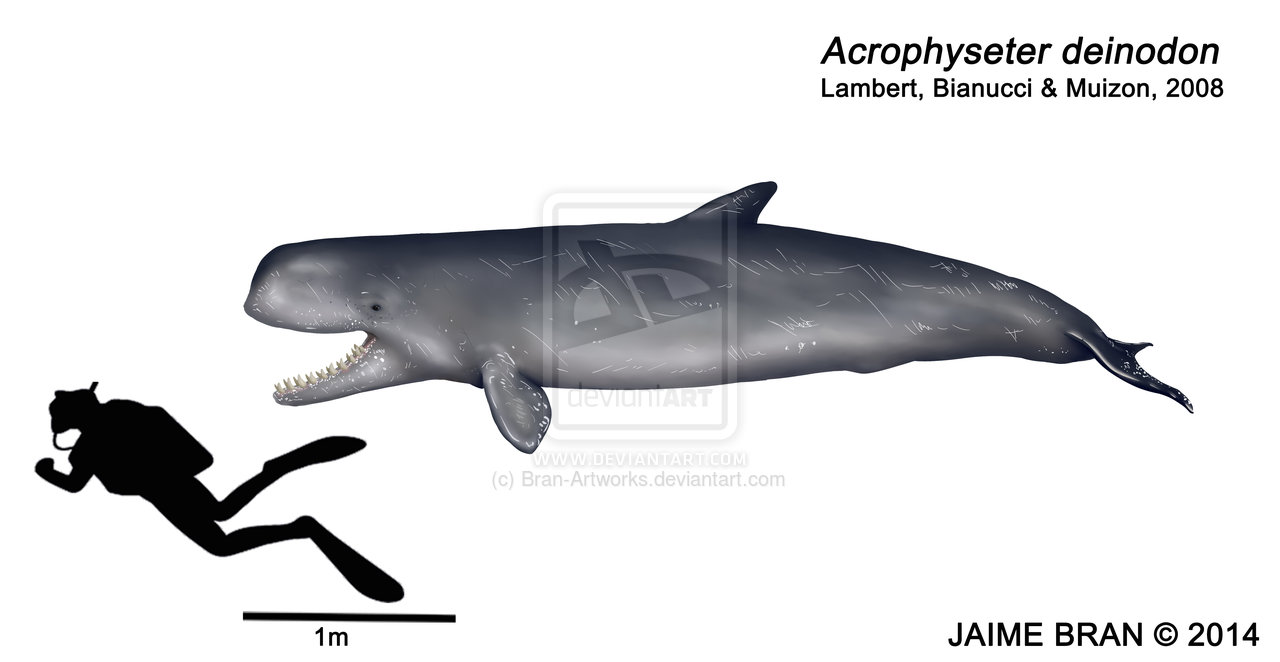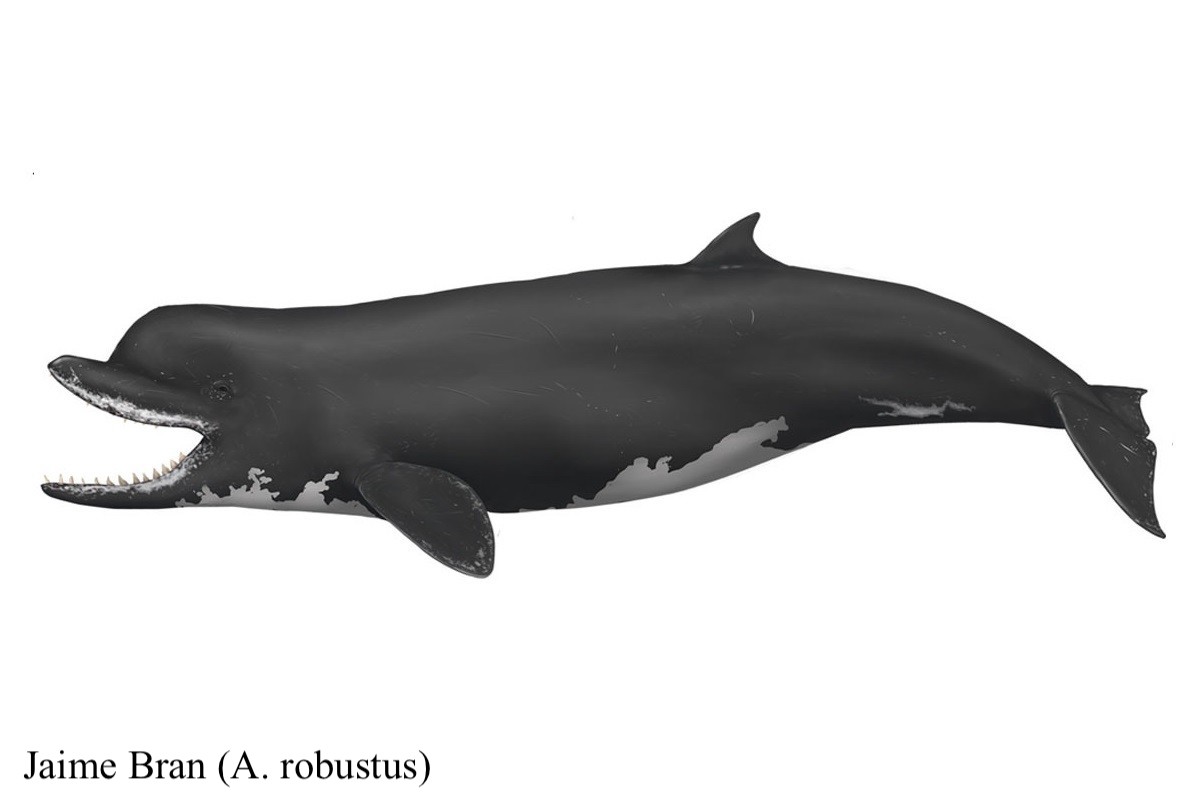Welcome to Acrophyseter

Name Definition
Acute blowhole
Name Given By
A. deinodon/Lambert, Bianucci, & Muizon in 2008 ; A. robustus/Lambert, Bianucci, & Muizon in 2016
Location
Peru, South America
Classification
Mammalia, Artiodactyla, Cetacea, Physeteroidea
Size
around 4 meters long
Temporal Range
Middle - Late Miocene of the Neogene period, about 13.65 - 5.33 million years ago
Ecological niche
aquatic predator
Species/Sub Species
A. deinodon (type species), A. robustus
Diet
Based on the robust dentition combined with the short and pointed snout indicates that Acrophyseter probably targeted prey larger than itself as well
Introduction
Acrophyseter is a genus of extinct sperm whales that lived off the coast of Peru during the Miocene epoch of the Neogene period. The genus name Acrophyseter derives from the Greek prefix akros meaning acute, and the suffix physeter means the blowhole from a whale, which is also the genus name for the modern sperm whale. The species name deinodon derives from the Greek word deinos meaning terrible, and the word donti means tooth. The species name deinodon refers to the large and strong conical teeth in both jaws. The front-most teeth were angled to point forwards, a feature that could possibly aid in the capture of prey. From there on, the prey would be pushed towards the back teeth of Acrophyseter that were perfect for shearing meat. The other species name robustus means robust in Latin, and Acrophyseter robustus had a more pointed snout and straighter teeth. Even with this kind of predatory dentition, Acrophyseter only measured at about 4 meters long, making it the smallest raptorial (predatory) sperm whale. Similar to modern sperm whales, Acrophyseter was an active predator and hunted other aquatic animals including the whale Pisobalaena and the seal Acrophoca, penguins like the species Spheniscus urbinai, the marine sloth Thalassocnus, and the gavialid crocodilian Piscogavialis. Smaller prey would be killed much faster, but larger prey for Acrophyseter would need to be worn down. To do this, Acrophyseter possibly concentrated attacks on places like the tail to significantly limit the movement of prey. The dentition of Acrophyseter seemed to be adapted to this kind of behavior since the front teeth could catch the tail easily while the rear teeth could start grinding on the tail, making the tail bleed a significant amount of blood and immobilizing the prey. It is currently unknown if whether Acrophyseter was a solitary or social animal, however, study of small cetaceans (the group that contains whales and dolphins) indicate that there is a strong possibility that Acrophyseter hunted in pod units to strategize and take down prey, especially because Acrophyseter is small for a sperm whale and would need pack power to tackle down large prey. Acrophyseter has been placed in the superfamily Physeteroidea along with some other genera of extinct whales including Zygophyseter, Aulophyseter, and the more famous Livyatan.
